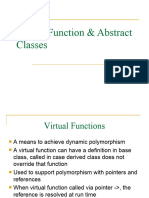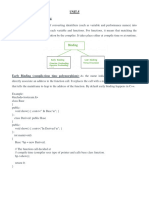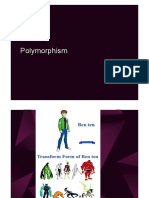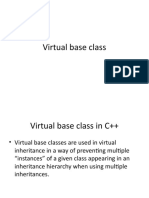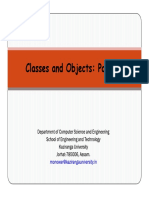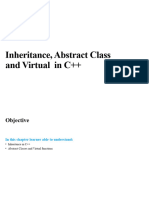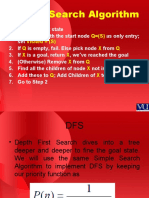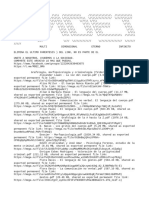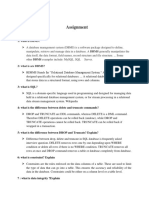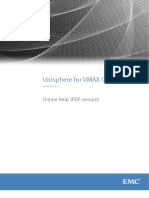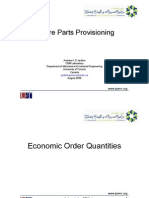Abstract classes
(C++)
�Abstract classes act as expressions of general concepts from which more specific classes can be
derived. You can't create an object of an abstract class type. However, you can use pointers and
references to abstract class types.
You create an abstract class by declaring at least one pure virtual member function. That's a
virtual function declared by using the pure specifier (= 0) syntax. Classes derived from the
abstract class must implement the pure virtual function or they, too, are abstract classes.
�Consider the example presented in Virtual functions. The intent of class Account is to provide
general functionality, but objects of type Account are too general to be useful. That means
Account is a good candidate for an abstract class:
�// deriv_AbstractClasses.cpp
// compile with: /LD
class Account {
public:
Account( double d ); // Constructor.
virtual double GetBalance(); // Obtain balance.
virtual void PrintBalance() = 0; // Pure virtual function.
private:
double _balance;
};
�The only difference between this declaration and the previous one is that PrintBalance is
declared with the pure specifier (= 0).
�Restrictions on abstract classes
Abstract classes can't be used for:
Variables or member data
Argument types
Function return types
Types of explicit conversions
If the constructor for an abstract class calls a pure virtual function, either directly or indirectly,
the result is undefined. However, constructors and destructors for abstract classes can call other
member functions.
�Defined pure virtual functions
Pure virtual functions in abstract classes can be defined, or have an implementation. You can
only call such functions by using the fully qualified syntax:
abstract-class-name::function-name()
Defined pure virtual functions are helpful when you design class hierarchies whose base classes
include pure virtual destructors. That's because base class destructors are always called during
object destruction. Consider the following example:
�// deriv_RestrictionsOnUsingAbstractClasses.cpp
// Declare an abstract base class with a pure virtual destructor.
// It's the simplest possible abstract class.
class base
{
public:
base() {}
// To define the virtual destructor outside the class:
virtual ~base() = 0;
// Microsoft-specific extension to define it inline:
// virtual ~base() = 0 {};
};
base::~base() {} // required if not using Microsoft extension
class derived : public base
{
public:
derived() {}
~derived() {}
};
int main()
{
derived aDerived; // destructor called when it goes out of scope
}
�The example shows how a Microsoft compiler extension lets you add an inline definition to pure
virtual ~base(). You can also define it outside the class by using base::~base() {}.
When the object aDerived goes out of scope, the destructor for class derived is called. The
compiler generates code to implicitly call the destructor for class base after the derived
destructor. The empty implementation for the pure virtual function ~base ensures that at least
some implementation exists for the function. Without it, the linker generates an unresolved
external symbol error for the implicit call.

